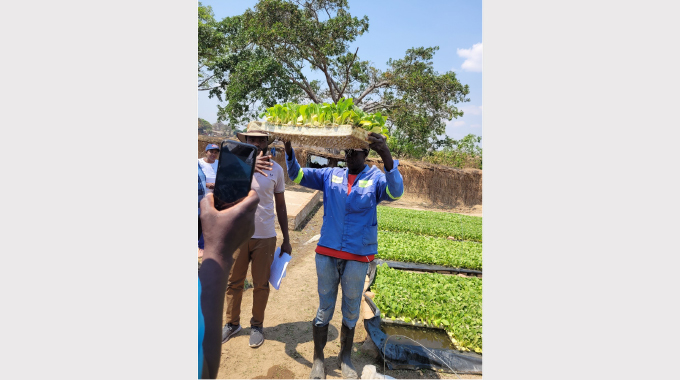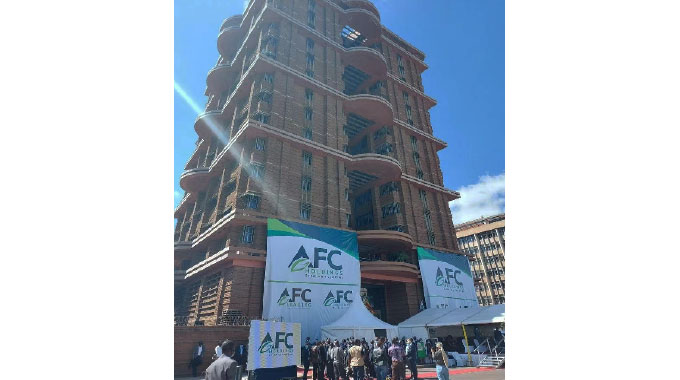TRB operationalises tobacco value chain transformation plan

Edgar Vhera-Agriculture Specialist Writer
THE Tobacco Research Board’s (TRB) push for sustainable tobacco production has given impetus to the transformation of the tobacco value chain into a US$5 billion industry by 2025 with farmers receiving tutorials on float tray technology, less-energy consuming barns, planned crop rotations and improved tobacco varieties.
This came out during a recent tour of Lochnager Farm in Muzarabani where the farmer is using TRB’s manual to the last letter with impressive results.
TRB’s main push in the Tobacco Value Chain Transformation Plan (TVCTP) lies in promoting sustainable intensification of tobacco production as well as researching and facilitating the production of alternative crops to diversify farmer revenue.
Head of Plant Health Services at TRB, Dr Cleopas Chinheya said the purpose of the Lochnager Farm tour was for farmers to get first hand experience of sustainable tobacco production practices at play from one of their own.
“We are gathered here today at Mr Charles Choto’s farm to go through the system from seedling production to the final product as part of TRB’s responsibility to disseminate information as well as for farmers to know what we are doing for sustainable tobacco production,” said Dr Chinheya.
Zimbabwe’s tobacco has a global appeal on account of its high quality and unique flavour. It is those unique selling propositions (USP) that the country must ride on to outpace its competitors and maintain a global dominance.
“TRB seeks to consolidate the country’s pinnacle position as regards the world’s source of highly valued tobacco through research into quality varieties and flavour,” further explained Dr Chinheya.
The game now is to be attentive to what the market demands and tobacco is no exception. The market now requires products that are sustainably produced, using acceptable chemicals, adhering to minimum residue levels (MRL) and not using child labour and TRB is practising these, said Dr Chinheya.
“The global market is now sensitive to how we produce our crop, using what chemical regimes, which labour practices, under what curing methods with all focusing on sustainable production, which averts deforestation,” continued Dr Chinheya.
In the past tobacco seedlings were produced using the conventional soil methods, but in soil there are plenty of living organisms such as bacteria, fungi, insects and nematodes that affect seedling growth and require chemicals to eradicate them. High hazardous pesticides such as methyl bromide, which has since been phased out, were used.
The TRB has been innovative and instituted a float tray seedling production method that is soil less, uses an inert growing media, uses less chemicals, requires less water, use less land and requires less labour with the trays being used over five seasons.
In a sure case of adoption of recommendation from TRB, a beneficiary of the land reform programme, Mr Masimba Charles Choto, an A2 farmer using a sub-division of Lochnager Farm led from the front in displaying his trust in the expert knowledge imparted to him.
“I used to prepare my tobacco seedlings using the old conventional method that required much land area and the application of many chemicals to control pests and diseases. With the help of TRB I have since migrated to float tray seed production system.
“The beauty of this system is that it is a sustainable tobacco seedling production method that requires less area and chemicals as well as producing healthy seedlings with well-developed root system,” said Mr Choto.
Dr Chinheya revealed that it was necessary to shift focus to the successful establishment of the crop paying much attention to chemical use and cultural management practices.
“TRB is advocating for less chemical usage through integrated pest management system, cultural management practices inclusion as well as use of softer greener chemicals. To aid this, varieties from TRB have resistance to nine diseases, coupled with cultural pest management the pests and diseases threat can be reduced to non-injurious levels,” revealed Dr Chinheya.
To clear the cycle of pests TRB is advocating crop rotation practices with relay crops such as sun hemp, Katambora Rhodes grass and the elite variety GHR1 that reduces nematodes within a year.
Many wrongly think that tobacco is dried, it is transformed into a state that the buyer wants, with curing being part of the equation.
Tobacco used too be cured in the conventional barns that used a lot of curing fuel, now TRB is advocating small-holder farmers to use the rocket barn and Kutsaga Counter Current 1 (KCC1), which use very little fuel and avert deforestation. TRB is encouraging farmers to plant their own gum plantations as well as work with sustainable afforestation association (SAA) for sustainable tobacco production.
TRB is researching on the use of exotic trees in the curing process as well as agroforestry in tobacco production.

A chongololo barn under construction at Mr Choto’s farm.
Large-scale farmers can cure their tobacco using the chongololo barns that consume less fuel.









Comments